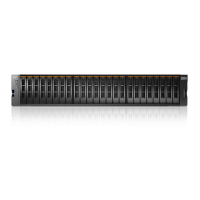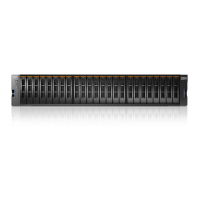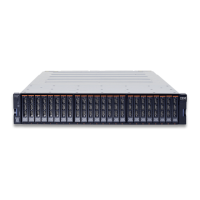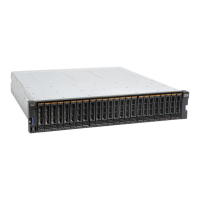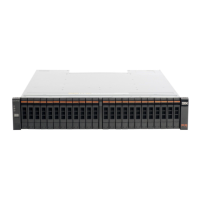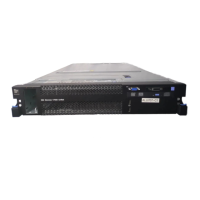558 Implementing the IBM Storwize V5000 Gen2 with IBM Spectrum Virtualize V8.1
10.7 Remote Copy
This section describes the Remote Copy services, which are a synchronous remote copy
called
Metro Mirror (MM), asynchronous remote copy called Global Mirror (GM), and
Global Mirror with Change Volumes. Remote Copy in the IBM Storwize V5000 Gen2 system
is similar to Remote Copy in the IBM System Storage DS8000® family at a functional level,
but the implementation differs.
The IBM Storwize V5000 Gen2 system provides a single point of control when remote copy is
enabled in your network (regardless of the disk subsystems that are used) if those disk
subsystems are supported by the IBM Storwize V5000 Gen2 system.
The general application of remote copy services is to maintain two real-time synchronized
copies of a volume. Often, two copies are geographically dispersed between two IBM
Storwize V5000 Gen2 systems, although it is possible to use MM or GM within a single
system (within an I/O Group). If the master copy fails, you can enable an auxiliary copy for
I/O operation.
A typical application of this function is to set up a dual-site solution that uses two IBM
Storwize V5000 Gen2 systems. The first site is considered the
primary site or production site,
and the second site is considered the
backup site or failover site, which is activated when a
failure at the first site is detected.
10.7.1 Multiple IBM Storwize V5000 system mirroring
Each IBM Storwize V5000 Gen2 system can maintain up to three partner system
relationships, which enables as many as four systems to be directly associated with each
other. This system partnership capability enables the implementation of disaster recovery
(DR) solutions.
Note: To establish an IP partnership, each IBM Storwize node must have only a single
remote copy port group that is configured, 1 or 2. The remaining IP addresses must be in
remote copy port group 0.
Tips: Intracluster MM/GM uses more resources within the system when compared to an
intercluster MM/GM relationship, where resource allocation is shared between the
systems. Use intercluster MM/GM when possible. For mirroring volumes in the same
system, it is better to use Volume Mirroring or the FlashCopy feature.
Note: For more information about restrictions and limitations of native IP replication, see
10.6.3, “IP partnership limitations” on page 552.
